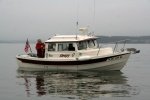localboy
New member
- Joined
- Sep 30, 2006
- Messages
- 4,673
- Reaction score
- 0
- C Dory Year
- 2007
- C Dory Model
- 25 Cruiser
- Vessel Name
- 'Au Kai (Ocean Traveler)
http://oceansignal.com/products/mob1/
Saw this for sale on Fisheries Supply e-mail. I had never seen it before. Opinions?
Saw this for sale on Fisheries Supply e-mail. I had never seen it before. Opinions?






